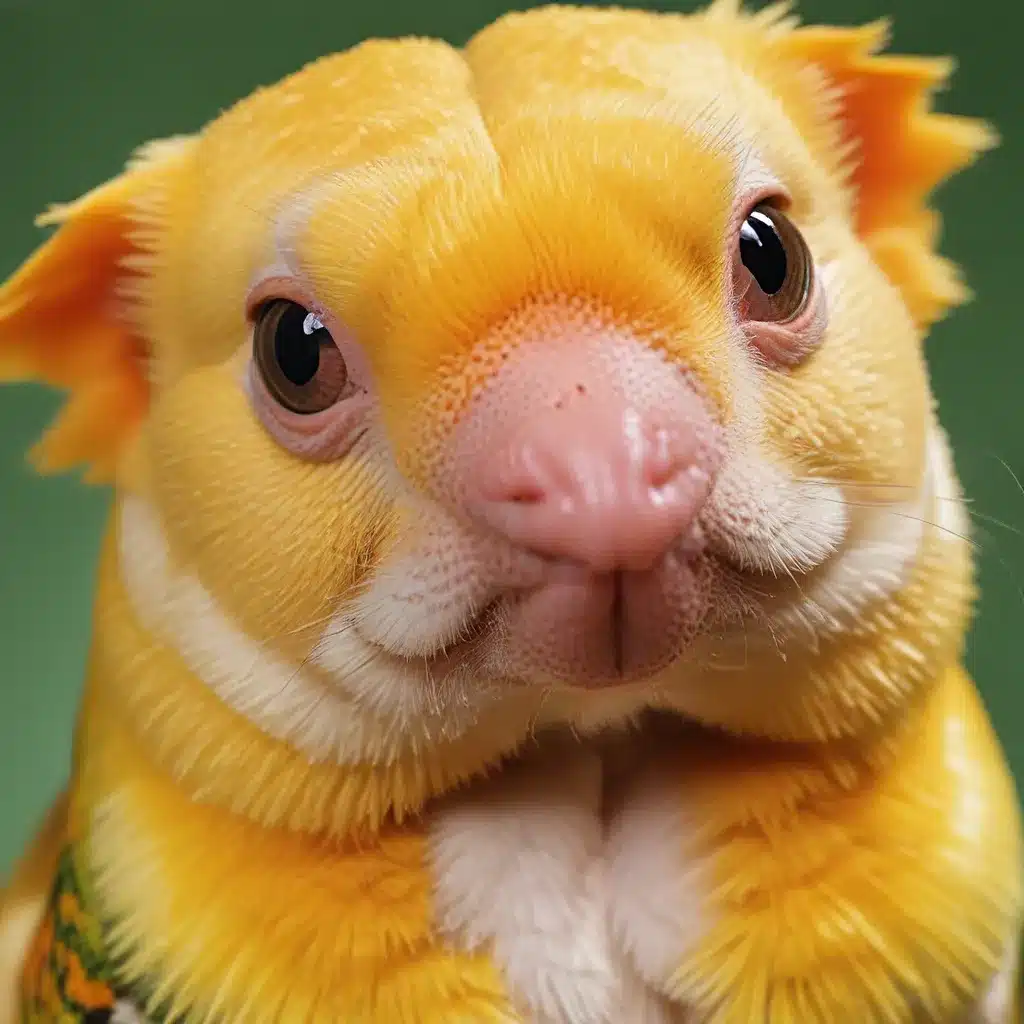
The Fascinating World of Exotic Pets
Ah, exotic pets – those captivating creatures that have captured the hearts of countless animal enthusiasts. From the vibrant, chatty parakeets to the mesmerizing snakes and lizards, the world of exotic pets is truly a realm of wonders. And let me tell you, as someone who’s been in this game for a while, I can say with certainty that these feathered, scaled, and furry friends are anything but “beginner-friendly.” In fact, providing them with the optimal care and nutrition they need to thrive is a delicate dance that requires a deep understanding of their unique needs.
The Importance of Proper Nutrition
Now, I know what you’re thinking – “How hard can it be to feed a little parakeet or a chameleon?” Well, my friend, let me tell you, it’s a whole lot more complex than you might imagine. You see, these extraordinary animals have highly specialized digestive systems and nutritional requirements that simply can’t be met by the generic pet store fare. And trust me, I’ve seen the devastating consequences of an imbalanced diet – from obesity and fatty liver disease to life-threatening malnutrition.
Debunking the Myth of the Seed-Only Diet
One of the most pervasive myths in the world of exotic pets is the idea that a seed-only diet is the way to go. I’m here to tell you that this couldn’t be further from the truth. While seeds may be a part of their natural diet, they simply don’t provide the full spectrum of vitamins, minerals, and nutrients that these animals need to thrive. In fact, relying solely on a seed-based diet can lead to a host of serious health problems, from weight gain to organ failure.
The Secrets to a Balanced Diet
So, what’s the secret to keeping your exotic pet in tip-top shape? It all comes down to diversity, my friends. Just like us humans, these amazing creatures need a well-rounded, balanced diet to ensure they’re getting all the essential nutrients they require. That means incorporating a variety of high-quality pellets, fresh vegetables, fruits, herbs, and even the occasional insect or two (for those insectivores out there).
Parakeets: Unlocking the Secrets to Optimal Health
Let’s dive a little deeper into the world of parakeets, shall we? These charming little birds, also known as budgies, are a beloved part of the avian family, but their dietary needs are often misunderstood. You see, parakeets are primarily granivores, meaning their natural diet is heavily focused on grains and seeds. However, that doesn’t mean they can survive on an all-seed diet alone.
Busting the Vitamin-Coated Seed Myth
One of the biggest misconceptions when it comes to parakeet nutrition is the idea that vitamin-coated seeds are the holy grail of avian diets. But guess what? This is nothing more than a fallacy. You see, parakeets have a unique way of eating – they’ll actually discard the outer shells of the seeds, leaving behind a significant portion of those vital nutrients. So, even if the seeds are coated in vitamins, your feathered friend might not be getting the full benefit.
The Balanced Parakeet Diet
So, what’s the solution? Well, it’s all about creating a diverse and balanced diet for your parakeet. The foundation should be a high-quality pelleted food, specifically formulated to meet the unique nutritional needs of these little guys. But that’s just the start. To truly ensure your parakeet is thriving, you’ll want to supplement their diet with a range of fresh vegetables, fruits, herbs, and even the occasional treat of edible flowers or a touch of red palm oil.
Practical Tips for Feeding Your Parakeet
Now, I know what you’re thinking – “Sounds great, but how the heck do I make this happen?” Fear not, my feathered friend, I’ve got you covered. One of the keys to success is establishing a consistent feeding routine. Check on your parakeet’s food in the morning and evening, and make sure it’s always fresh and plentiful. Additionally, consider batch-preparing some delicious “bird chop” – a mixture of veggies, fruits, and other healthy goodies that you can freeze in individual portions for easy, hassle-free feeding.
The Birdies’ Choice Method
And if you’re worried about your parakeet turning their beak up at the new, healthier diet, fear not – there’s a method that can make the transition a breeze. It’s called the “Birdies’ Choice” technique, and it capitalizes on your parakeet’s natural foraging instincts to make the switch to a balanced diet a positive and engaging experience. By incorporating positive reinforcement and gradual acclimation, you can transform mealtime into a true delight for your feathered friend.
Embarking on the Journey to Optimal Health
So, there you have it, folks – the secrets to unlocking the optimal health and wellness of your exotic pets. Whether you’re caring for a vibrant parakeet or a captivating snake, the key is to ditch the generic pet store fare and embrace a diverse, balanced diet that caters to their unique needs. It may take a little extra effort, but trust me, the payoff is worth it – a happy, healthy, and thriving companion that will bring endless joy to your life.

